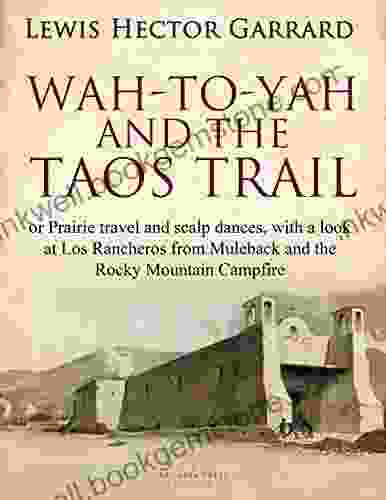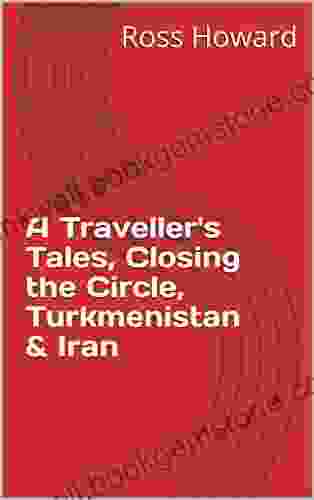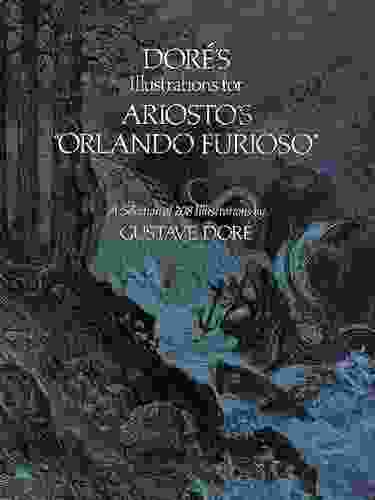On Prairie Travel and Scalp Dances: With a Look at Los Rancheros from Muleback

In the annals of American history, the Great Plains have long held a place of myth and legend. These vast, rolling landscapes were once home to countless Native American tribes, and the region's history is steeped in tales of conflict, exploration, and survival.
4.3 out of 5
| Language | : | English |
| File size | : | 413 KB |
| Text-to-Speech | : | Enabled |
| Screen Reader | : | Supported |
| Enhanced typesetting | : | Enabled |
| Word Wise | : | Enabled |
| Print length | : | 136 pages |
One of the most iconic aspects of life on the Great Plains was the practice of prairie travel. For centuries, Native Americans traversed these vast distances on horseback, using a variety of techniques and equipment to navigate the terrain and survive the elements.
The most important piece of equipment for prairie travel was the travois, a sled-like device that was used to transport goods and supplies. The travois was typically made of two poles tied together at one end and dragged behind a horse. The other end of the travois was hitched to the horse's saddle, and the load was secured with ropes or leather straps.
In addition to the travois, prairie travelers also carried a variety of other supplies, including food, water, clothing, and weapons. Food supplies typically consisted of dried meat, pemmican, and wild berries. Water was scarce on the Great Plains, so travelers often had to rely on waterholes or rivers to replenish their supply.
Clothing was an important consideration for prairie travelers, as the weather could change rapidly. Travelers typically wore layered clothing made of leather, fur, or wool. They also wore moccasins or boots to protect their feet from the rough terrain.
Weapons were also an essential part of prairie travel, as Native Americans were often at risk of attack from other tribes or from white settlers. The most common weapons carried by prairie travelers were bows and arrows, spears, and knives.
Prairie travel was a dangerous and often difficult undertaking. Travelers had to contend with extreme weather conditions, rough terrain, and the threat of attack. However, it was also an essential part of life for Native Americans on the Great Plains. By learning to navigate these vast landscapes, they were able to survive and thrive in one of the most unforgiving environments on Earth.
In addition to prairie travel, the Great Plains were also home to a variety of other cultural practices, including scalp dances. Scalp dances were performed by Native Americans to celebrate a successful raid or battle. The dance typically involved singing, dancing, and the display of scalps taken from enemy warriors.
Scalp dances were a controversial practice, and they were often condemned by white settlers. However, for Native Americans, scalp dances were an important part of their culture and tradition. The dance served to honor the bravery of warriors and to commemorate the victory of their tribe.
One of the most famous groups of scalp dancers on the Great Plains were the Los Rancheros. The Los Rancheros were a group of Mexican-American cowboys who lived in the Texas-Mexico border region. The Los Rancheros were known for their horsemanship and their skill in battle. They often participated in scalp dances, and they were feared by both Native Americans and white settlers alike.
In 1857, a group of Los Rancheros attacked a group of Apache warriors in the Texas-Mexico border region. The Los Rancheros killed several Apache warriors and took their scalps. The Apache warriors retaliated by attacking a group of Los Rancheros, killing several cowboys and taking their scalps.
The conflict between the Los Rancheros and the Apache warriors continued for several years. The two groups engaged in a series of raids and counter-raids, and the conflict eventually culminated in the Battle of Cibecue Creek in 1872. The Battle of Cibecue Creek was a decisive victory for the Apache warriors, and it marked the end of the Los Rancheros as a scalp-dancing group.
The story of the Los Rancheros and the Apache warriors is a reminder of the complex and often violent history of the Great Plains. The region was a place of conflict and bloodshed, but it was also a place of great beauty and cultural diversity. The people who lived on the Great Plains were some of the most resilient and resourceful people in the world, and their story is a testament to the human spirit.
4.3 out of 5
| Language | : | English |
| File size | : | 413 KB |
| Text-to-Speech | : | Enabled |
| Screen Reader | : | Supported |
| Enhanced typesetting | : | Enabled |
| Word Wise | : | Enabled |
| Print length | : | 136 pages |
Do you want to contribute by writing guest posts on this blog?
Please contact us and send us a resume of previous articles that you have written.
 Best Book
Best Book Page Flip
Page Flip Bookshelf
Bookshelf Literary loom
Literary loom Chapter
Chapter Bookish
Bookish PageTurner
PageTurner Bibliophile
Bibliophile Story
Story Inkwell
Inkwell Bookworm
Bookworm Labyrinth
Labyrinth Plot Twist
Plot Twist Prose
Prose Paperback
Paperback Storyteller
Storyteller Sanctuary
Sanctuary Fiction
Fiction Reading
Reading Chronicle
Chronicle Read
Read El Griffin
El Griffin Eva Marie Magill Oliver
Eva Marie Magill Oliver Ellen Besen
Ellen Besen Tom Ryan
Tom Ryan Janet Wilcox
Janet Wilcox Robert Bree
Robert Bree Stu Lloyd
Stu Lloyd Christopher Hart
Christopher Hart Gavin Strange
Gavin Strange Paris Permenter
Paris Permenter Ellen Winner
Ellen Winner Latin Travel
Latin Travel Tarana Burke
Tarana Burke Arthur C Danto
Arthur C Danto Ellen Eagle
Ellen Eagle Leslie Buck
Leslie Buck Malcolm X
Malcolm X James Egan
James Egan Diane Kochilas
Diane Kochilas Dr Cecil H H Mills
Dr Cecil H H Mills Langston Hughes
Langston Hughes Dylan Birtolo
Dylan Birtolo Jackie Barrass
Jackie Barrass Edward Sylvester Ellis
Edward Sylvester Ellis Zarifa Ghafari
Zarifa Ghafari Richard Goodman
Richard Goodman Nina Garcia
Nina Garcia Diane Seuss
Diane Seuss E M Hardy
E M Hardy E John B Allen
E John B Allen Sei Shonagon
Sei Shonagon Jason Caldwell
Jason Caldwell Paul Doyle
Paul Doyle Jason Tselentis
Jason Tselentis Eliza Ruhamah Scidmore
Eliza Ruhamah Scidmore John Brunner
John Brunner Doris Lessing
Doris Lessing Daniel Verastiqui
Daniel Verastiqui Shaunna Russell
Shaunna Russell Nicholas Woodsworth
Nicholas Woodsworth John G Neihardt
John G Neihardt Rose Art
Rose Art Sam Baldwin
Sam Baldwin Joanne Fink
Joanne Fink Liza Rodman
Liza Rodman Rylee Tipton
Rylee Tipton Modris Eksteins
Modris Eksteins Ben Swanepoel
Ben Swanepoel Emil Draitser
Emil Draitser Kevin Brownlow
Kevin Brownlow Jane Evans
Jane Evans Dianne Pineda Kim
Dianne Pineda Kim Derek Murphy
Derek Murphy Michael Ferber
Michael Ferber John Dickie
John Dickie Emily Byrne Curtis
Emily Byrne Curtis Elijah Nicholas Wilson
Elijah Nicholas Wilson Lea Rawls
Lea Rawls Lisa Kleypas
Lisa Kleypas Manifestation Publishing House
Manifestation Publishing House Greg Simonds
Greg Simonds Eliot Peper
Eliot Peper George Kubler
George Kubler Luigi Amara
Luigi Amara Kiese Laymon
Kiese Laymon Steven M Barrett
Steven M Barrett Kate Betts
Kate Betts Laura A Macaluso
Laura A Macaluso Tracy Brown
Tracy Brown Ellen Grady
Ellen Grady Tina Fey
Tina Fey C Pierce Salguero
C Pierce Salguero Wes Moore
Wes Moore Nan Sanders Pokerwinski
Nan Sanders Pokerwinski Michael Dante Dimartino
Michael Dante Dimartino Jm Guillen
Jm Guillen Douglas Segal
Douglas Segal Dk Eyewitness
Dk Eyewitness Elizabeth Mowry
Elizabeth Mowry Ralph Cotton
Ralph Cotton Bruce Cook
Bruce Cook Hadley Freeman
Hadley Freeman Hannah Dale
Hannah Dale Lynne Pickering
Lynne Pickering Jeff Farr
Jeff Farr Paul J Foster
Paul J Foster Brian Dougherty
Brian Dougherty Nicholas Turner
Nicholas Turner Ellen Murkison
Ellen Murkison Elizabeth Faidley
Elizabeth Faidley Raymond L Weil
Raymond L Weil Francesco Lo Iacono
Francesco Lo Iacono Shimrit Elisar
Shimrit Elisar Janet Lynn Cano
Janet Lynn Cano Neil Baldwin
Neil Baldwin Robert M Utley
Robert M Utley Wendy E Simmons
Wendy E Simmons Joseph Toone
Joseph Toone Wing Over
Wing Over Elaine Bertolotti
Elaine Bertolotti Elena Tchernichova
Elena Tchernichova L X Beckett
L X Beckett Emma Svensson
Emma Svensson Roberta Carter Clark
Roberta Carter Clark Tim Travis
Tim Travis Luke Zimmermann
Luke Zimmermann Paul E Cooley
Paul E Cooley Gregory Curtis
Gregory Curtis Patti Smith
Patti Smith L D Goffigan
L D Goffigan Paper Monument
Paper Monument Tulku Thondup
Tulku Thondup Didier Ghez
Didier Ghez Maria Arango Diener
Maria Arango Diener Mala Kacenberg
Mala Kacenberg Jackie Simmonds
Jackie Simmonds Regis Yaworski
Regis Yaworski Kyle West
Kyle West Edmund S Wong
Edmund S Wong Hernan Diaz
Hernan Diaz Edward Chisholm
Edward Chisholm Michael Eric Dyson
Michael Eric Dyson Linda Riesenberg Fisler
Linda Riesenberg Fisler Eduardo Navas
Eduardo Navas Susanna Kaysen
Susanna Kaysen Robert E Howard
Robert E Howard Ryan Kane
Ryan Kane Dick Durham
Dick Durham Edwin George Lutz
Edwin George Lutz Karen Redrobe Beckman
Karen Redrobe Beckman Matthew Farrer
Matthew Farrer Devon C Ford
Devon C Ford Sebastien De Castell
Sebastien De Castell Elizabeth Bear
Elizabeth Bear Vladimir Alexandrov
Vladimir Alexandrov Uncle Brazil
Uncle Brazil Insight Traveller
Insight Traveller Jean Luc Nancy
Jean Luc Nancy Duncan M Webb
Duncan M Webb Edward Victor
Edward Victor Logan Jacobs
Logan Jacobs Mindy Mejia
Mindy Mejia Meb Keflezighi
Meb Keflezighi Rohan M Vider
Rohan M Vider Jacques Derrida
Jacques Derrida Spike Bucklow
Spike Bucklow Mike Yoshiaki Daikubara
Mike Yoshiaki Daikubara Richard Fortey
Richard Fortey Emily Carr
Emily Carr Phil Maxey
Phil Maxey Keeyla Meadows
Keeyla Meadows Bruno Munari
Bruno Munari G A Matiasz
G A Matiasz Eric Pyle
Eric Pyle Kristen Dutkiewicz
Kristen Dutkiewicz Gustave Dore
Gustave Dore Gary K Wolf
Gary K Wolf Jupiter Kids
Jupiter Kids Dorothy Grant
Dorothy Grant Maria Nolasco
Maria Nolasco Karen Kluglein
Karen Kluglein Kensuke Okabayashi
Kensuke Okabayashi Eric Thomas
Eric Thomas Duncan Barrett
Duncan Barrett Loretta Outwater Cox
Loretta Outwater Cox Jean Pierre Isbouts
Jean Pierre Isbouts Gabriel Miller
Gabriel Miller Elizabeth Stansberry
Elizabeth Stansberry Paul Cornell
Paul Cornell Sylvia Kristel
Sylvia Kristel Elizabeth Wenk
Elizabeth Wenk Rachel Aaron
Rachel Aaron Ellisa Bender
Ellisa Bender Kareem Aal
Kareem Aal Kassanna
Kassanna Michael Marshall Smith
Michael Marshall Smith Joy Harjo
Joy Harjo Maurice White
Maurice White Bil Donovan
Bil Donovan Karen Karon
Karen Karon Tilar J Mazzeo
Tilar J Mazzeo Miss Jazzie
Miss Jazzie John F Harnish
John F Harnish Kurt Meissner
Kurt Meissner Kim Brown Seely
Kim Brown Seely Darin Martineau
Darin Martineau Jack Campbell
Jack Campbell Kelly Speck
Kelly Speck Emily Colson
Emily Colson Yoshitomo Ikawa
Yoshitomo Ikawa Susan Elizabeth Jones
Susan Elizabeth Jones Simon Gervais
Simon Gervais Ruth Leaf
Ruth Leaf Edward M Lerner
Edward M Lerner William Blake
William Blake Mia Leonin
Mia Leonin John Brewer
John Brewer Jared Blando
Jared Blando Mark Franko
Mark Franko Tanya Talaga
Tanya Talaga Dr Leo Henry Wildeman
Dr Leo Henry Wildeman Mark Farnsworth
Mark Farnsworth Thad Carhart
Thad Carhart Luca Turin
Luca Turin Rachel Polonsky
Rachel Polonsky Faythe Levine
Faythe Levine Lucy Coleman
Lucy Coleman David Bergsland
David Bergsland Glenn Rudin
Glenn Rudin Victoria Christopher Murray
Victoria Christopher Murray Elizabeth L Eisenstein
Elizabeth L Eisenstein Helene Cixous
Helene Cixous Eli Brook
Eli Brook Jenni Basch
Jenni Basch John Michael Rivera
John Michael Rivera Halka Chronic
Halka Chronic Jeff Lenburg
Jeff Lenburg Julie Kavanagh
Julie Kavanagh Marvin Kalb
Marvin Kalb Nathan Hystad
Nathan Hystad Phuc Tran
Phuc Tran Robert E Kapsis
Robert E Kapsis Dervla Murphy
Dervla Murphy Donna Everhart
Donna Everhart Eddy De Wind
Eddy De Wind James W Stanfield Jr
James W Stanfield Jr Ralph Kern
Ralph Kern Joey Korenman
Joey Korenman Mint Editions
Mint Editions Dima Zales
Dima Zales Jennie Smallenbroek
Jennie Smallenbroek Noah Galloway
Noah Galloway Rick Partlow
Rick Partlow Debra Kayn
Debra Kayn Joi Barrios
Joi Barrios Victoria Lewis
Victoria Lewis Geoff Kersey
Geoff Kersey Patrick Youngblood
Patrick Youngblood Michelle Lawson
Michelle Lawson James A Moore
James A Moore L L Richman
L L Richman Hillary Kerr
Hillary Kerr Jacob Burckhardt
Jacob Burckhardt Mulk Raj Anand
Mulk Raj Anand Luana Luconi Winner
Luana Luconi Winner Sanyika Shakur
Sanyika Shakur Harry Harrison
Harry Harrison R S Penney
R S Penney Yehuda Koren
Yehuda Koren Emily Haynes
Emily Haynes Jonathan Sacks
Jonathan Sacks Emma Baxter Wright
Emma Baxter Wright Chris Legaspi
Chris Legaspi Edward Burns
Edward Burns Sylvia Foster
Sylvia Foster Diane Keaton
Diane Keaton John Sandford
John Sandford Diane Wilson
Diane Wilson Gina S
Gina S Jan Kunz
Jan Kunz Ronald Malfi
Ronald Malfi Dori Griffin
Dori Griffin Matt Johnston
Matt Johnston Joe Holt
Joe Holt Roz Marshall
Roz Marshall Ed Sikov
Ed Sikov Jonathan Smidt
Jonathan Smidt Sarah Nisbett
Sarah Nisbett Mary Jane Jacob
Mary Jane Jacob Nella Larsen
Nella Larsen W R Tymms
W R Tymms T C Edge
T C Edge Jennifer Frick Ruppert
Jennifer Frick Ruppert Robert Ullian
Robert Ullian Julian Armfield
Julian Armfield Michael R Jacobs
Michael R Jacobs Rick Furphy
Rick Furphy Elizabeth Bonesteel
Elizabeth Bonesteel Isidra Mencos
Isidra Mencos Don Peri
Don Peri Wilfrid Jonson
Wilfrid Jonson Christopher Johns
Christopher Johns Eddie Armer
Eddie Armer Megan K Stack
Megan K Stack Peter F Drucker
Peter F Drucker Michael R Pitts
Michael R Pitts Peter Cristofono
Peter Cristofono Dermot Mcevoy
Dermot Mcevoy Marc Steinberg
Marc Steinberg Benjamin R Jordan
Benjamin R Jordan Josef Feller
Josef Feller Joe Greer
Joe Greer James A Michener
James A Michener Lady Dia
Lady Dia Alberto Manguel
Alberto Manguel Tiffany Dufu
Tiffany Dufu Sarah Lentz
Sarah Lentz Robyn Neild
Robyn Neild Jane Maday
Jane Maday Iceberg Slim
Iceberg Slim Lexie Winston
Lexie Winston Peter Spiegelman
Peter Spiegelman Kristal Wick
Kristal Wick Roger Kahn
Roger Kahn James Dickey
James Dickey Dennis E Taylor
Dennis E Taylor Louis Blanc
Louis Blanc Kate Stevens
Kate Stevens Riad Sattouf
Riad Sattouf Jeff Long
Jeff Long Elizabeth Miki Brina
Elizabeth Miki Brina Greg Manning
Greg Manning Zachary Fenell
Zachary Fenell Arthur C Clarke
Arthur C Clarke Grigori Grabovoi
Grigori Grabovoi Edvard Munch
Edvard Munch Megan Hess
Megan Hess Prakruti Prativadi
Prakruti Prativadi Gabriela Jauregui
Gabriela Jauregui Vasily Mahanenko
Vasily Mahanenko Dr Harpal Sodhi
Dr Harpal Sodhi Michael Mcbride
Michael Mcbride Stanley Vestal
Stanley Vestal E E Smith
E E Smith Judy Botello
Judy Botello Jim Green
Jim Green Jonathan Green
Jonathan Green Elise Mahan
Elise Mahan Edith Young
Edith Young Jennifer Clement
Jennifer Clement Jian Ping
Jian Ping Elaine A Powers
Elaine A Powers Elizabeth Kendall
Elizabeth Kendall Nick Hunt
Nick Hunt Neil Bennion
Neil Bennion Olga Lengyel
Olga Lengyel Rosecrans Baldwin
Rosecrans Baldwin Wanda M Morris
Wanda M Morris Randy Wayne White
Randy Wayne White Nicholas Gill
Nicholas Gill Elle Wright
Elle Wright Naglaa Ghali
Naglaa Ghali Tom Cole
Tom Cole Nai
Nai Rebecca Fraser
Rebecca Fraser Scott Olsen
Scott Olsen Eric Gill
Eric Gill Victoria Shearer
Victoria Shearer Eat Like A Local
Eat Like A Local Sloan De Forest
Sloan De Forest S R Witt
S R Witt Stephen Clarke
Stephen Clarke Elin Hilderbrand
Elin Hilderbrand William Dalrymple
William Dalrymple Eric Rickstad
Eric Rickstad Jonathan Yanez
Jonathan Yanez Wensley Clarkson
Wensley Clarkson Robert N Charrette
Robert N Charrette S Rob
S Rob Joy Deja King
Joy Deja King Mark Stattelman
Mark Stattelman Arlo Adams
Arlo Adams Lynne M Thomas
Lynne M Thomas Hugh Iwanicki
Hugh Iwanicki John Anthony Davis
John Anthony Davis Scott Kloos
Scott Kloos Christine A Collins
Christine A Collins Kellye Garrett
Kellye Garrett Rachel Mclean
Rachel Mclean Eloisa James
Eloisa James Marcel Liebman
Marcel Liebman Jamie K Schmidt
Jamie K Schmidt Rilzy Adams
Rilzy Adams Douglas Phillips
Douglas Phillips Roark Bradford
Roark Bradford Drmw
Drmw Kate Lock
Kate Lock Sergey Skudaev
Sergey Skudaev Charles Dellheim
Charles Dellheim Anthony J Melchiorri
Anthony J Melchiorri Larry Mcmurtry
Larry Mcmurtry G Eric Francis
G Eric Francis Emily Craft By Maker Academy
Emily Craft By Maker Academy Moritz Fink
Moritz Fink Emma Gift
Emma Gift Diana O Gilvie
Diana O Gilvie Sarah Turnbull
Sarah Turnbull Maya Washington
Maya Washington Francis Hopkinson Smith
Francis Hopkinson Smith El Greco
El Greco Edwidge Danticat
Edwidge Danticat Daniel Ankele
Daniel Ankele Emma Block
Emma Block Yuri Leving
Yuri Leving Elena Gorokhova
Elena Gorokhova Elizabeth Alexander
Elizabeth Alexander Jill Culiner
Jill Culiner John Dominic Crossan
John Dominic Crossan Jana Marcus
Jana Marcus Dominick Dunne
Dominick Dunne Richard Detrich
Richard Detrich James Joseph
James Joseph James Goddard
James Goddard Ed Hooks
Ed Hooks David A Robertson
David A Robertson Thomas Crow
Thomas Crow Janet Wood
Janet Wood Grace Hamilton
Grace Hamilton Rosemary Mahoney
Rosemary Mahoney Neil Lancaster
Neil Lancaster Pm Johnson
Pm Johnson Matteo Cossu
Matteo Cossu Emiliano Zapata
Emiliano Zapata William Kent Krueger
William Kent Krueger Lisa Rose Wright
Lisa Rose Wright Lewis Knight
Lewis Knight Peter Carey
Peter Carey Emerson Hough
Emerson Hough Edward Branigan
Edward Branigan Violet Kupersmith
Violet Kupersmith Margarita Gokun Silver
Margarita Gokun Silver Tjio Kayloe
Tjio Kayloe Jody Houton
Jody Houton Mika Tufuga Valai
Mika Tufuga Valai Terry Bennett
Terry Bennett Scott Eyman
Scott Eyman Nichole Perkins
Nichole Perkins Ruth Wilshaw
Ruth Wilshaw Jesse Storm
Jesse Storm Eduardo Galeano
Eduardo Galeano Maggie Nelson
Maggie Nelson Gene Perret
Gene Perret Patricia Telesco
Patricia Telesco Jeff Pearlman
Jeff Pearlman Rebecca Solnit
Rebecca Solnit Jamie James
Jamie James Valerie Boyd
Valerie Boyd Dennis Banks
Dennis Banks Reed Farrel Coleman
Reed Farrel Coleman Sarah Pinsker
Sarah Pinsker Edward Brody
Edward Brody Tessa Bailey
Tessa Bailey John S C Abbott
John S C Abbott E B Dawson
E B Dawson David A Price
David A Price Clarence King
Clarence King Taylor Dibbert
Taylor Dibbert Richard Huber
Richard Huber Phyllis Klotz
Phyllis Klotz Laura Vae Gatz
Laura Vae Gatz Orson Scott Card
Orson Scott Card Pablo Hidalgo
Pablo Hidalgo Doug Gelbert
Doug Gelbert Michel Prince
Michel Prince Harry Whitewolf
Harry Whitewolf Insight Guides
Insight Guides Robert D Armstrong
Robert D Armstrong Jasper Rees
Jasper Rees Ashleynicole
Ashleynicole Maria Hinojosa
Maria Hinojosa Gananath Obeyesekere
Gananath Obeyesekere Matt Fox
Matt Fox Edgar A Whitney
Edgar A Whitney Pam Young
Pam Young Lindsey Pogue
Lindsey Pogue Michael Lakin
Michael Lakin Imbolo Mbue
Imbolo Mbue Michael Showalter
Michael Showalter Jean Muenchrath
Jean Muenchrath Nancy Reyner
Nancy Reyner Edwin Harkness Spina
Edwin Harkness Spina Ina Saltz
Ina Saltz Nicholas Wapshott
Nicholas Wapshott Elizabeth Size
Elizabeth Size Emily Hahn
Emily Hahn John Matthews
John Matthews Gabriella Contestabile
Gabriella Contestabile Loki Renard
Loki Renard David Archer
David Archer Tahir Shah
Tahir Shah Tess Burrows
Tess Burrows Jasmine Guillory
Jasmine Guillory Jean Le Pautre
Jean Le Pautre Mark Cooper
Mark Cooper James R Lilley
James R Lilley Tessa Hadley
Tessa Hadley William V Dunning
William V Dunning Jim Krause
Jim Krause Ethan Casey
Ethan Casey Thomas Shor
Thomas Shor Roger Scruton
Roger Scruton Richard Tongue
Richard Tongue Ferrett Steinmetz
Ferrett Steinmetz Sara Boccaccini Meadows
Sara Boccaccini Meadows Helen Keller
Helen Keller Lauren Beukes
Lauren Beukes Dorothy Dent
Dorothy Dent Mark Twain
Mark Twain Jonathan Coe
Jonathan Coe Kale James
Kale James Max Fatouretchi
Max Fatouretchi Skywatcher Press
Skywatcher Press J R Ward
J R Ward Peter Lord
Peter Lord Daniel Gross
Daniel Gross Stephanie Elizondo Griest
Stephanie Elizondo Griest Marina Bakasova
Marina Bakasova Brett Tate
Brett Tate Jeanne St James
Jeanne St James Devin Harbison
Devin Harbison Paul Noble
Paul Noble Tom Shone
Tom Shone Johannes Zang
Johannes Zang Kelley Swain
Kelley Swain Jamie Eubanks
Jamie Eubanks Elizabeth Kincaid
Elizabeth Kincaid Whitney Chadwick
Whitney Chadwick Rory Moulton
Rory Moulton Dustin Graham
Dustin Graham George Catlin
George Catlin Michael Arndt
Michael Arndt Giuseppe Cristiano
Giuseppe Cristiano S J Pajonas
S J Pajonas Jesse Mccarthy
Jesse Mccarthy Elie Wiesel
Elie Wiesel Ebony Roberts
Ebony Roberts Emily Scherb
Emily Scherb Madeleine Orban Szontagh
Madeleine Orban Szontagh Peter Marren
Peter Marren Lewis Hector Garrard
Lewis Hector Garrard Martha Bayne
Martha Bayne Richard Tabor Greene
Richard Tabor Greene Geniuz Gamer
Geniuz Gamer Diana Somerville
Diana Somerville Henrietta Harrison
Henrietta Harrison Dick Jackson
Dick Jackson Ruth Reichl
Ruth Reichl Steve Balderson
Steve Balderson Jade Royal
Jade Royal Pedro Martinez
Pedro Martinez Sari Botton
Sari Botton Sean D Young
Sean D Young William Silvers
William Silvers Joel Enos
Joel Enos Dessy Tsolova
Dessy Tsolova Ladoris Hazzard Cordell
Ladoris Hazzard Cordell Jessica Hische
Jessica Hische Robyne Leblanc
Robyne Leblanc Laurence Maslon
Laurence Maslon Language Learning University
Language Learning University Toby Neal
Toby Neal Zongyan Hu
Zongyan Hu Elizabeth Brundage
Elizabeth Brundage Desmond King
Desmond King Edward Struzik
Edward Struzik William Silvester
William Silvester Rosie Mercado
Rosie Mercado Graham Webb
Graham Webb Octavia Hyde
Octavia Hyde Radim Malinic
Radim Malinic Izzy Paskowitz
Izzy Paskowitz Patrick Syme
Patrick Syme Wendy Lesser
Wendy Lesser Douglas Johnson
Douglas Johnson E M Forster
E M Forster Edgar Allan Poe
Edgar Allan Poe Michael R Fletcher
Michael R Fletcher Kurt Vonnegut
Kurt Vonnegut C M Carney
C M Carney Elizabeth Becker
Elizabeth Becker Vera Nazarian
Vera Nazarian Frank Right
Frank Right Thomas Booth
Thomas Booth Diane Greenberg
Diane Greenberg Kevin Kwan
Kevin Kwan Dom Joly
Dom Joly Booker T Washington
Booker T Washington Donald Hamilton
Donald Hamilton Karen Campbell
Karen Campbell Edward Willett
Edward Willett Mary Wellesley
Mary Wellesley Diana Marcum
Diana Marcum T M Haviland
T M Haviland Phil Kelly
Phil Kelly E E Knight
E E Knight
Light bulbAdvertise smarter! Our strategic ad space ensures maximum exposure. Reserve your spot today!
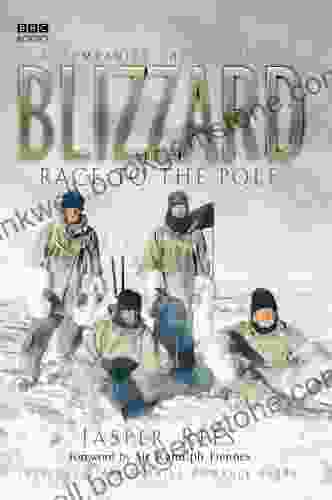
 Billy PetersonBlizzard's Race to the Pole: A Quest for Arctic Supremacy and Scientific...
Billy PetersonBlizzard's Race to the Pole: A Quest for Arctic Supremacy and Scientific... Francisco CoxFollow ·12.1k
Francisco CoxFollow ·12.1k Milan KunderaFollow ·9k
Milan KunderaFollow ·9k Anthony WellsFollow ·18k
Anthony WellsFollow ·18k Harold BlairFollow ·14.8k
Harold BlairFollow ·14.8k Raymond ChandlerFollow ·14.2k
Raymond ChandlerFollow ·14.2k Rob FosterFollow ·8k
Rob FosterFollow ·8k Paulo CoelhoFollow ·14.8k
Paulo CoelhoFollow ·14.8k Jules VerneFollow ·13.4k
Jules VerneFollow ·13.4k
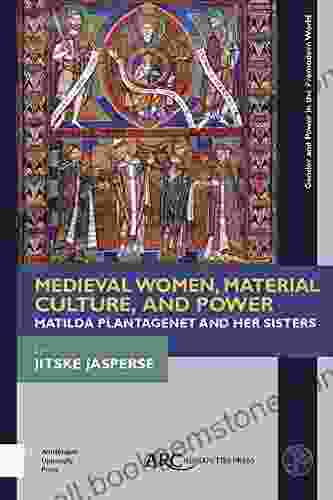
 Dennis Hayes
Dennis HayesMatilda Plantagenet and Her Sisters: Gender and Power in...
The lives of Matilda Plantagenet and her...

 Carl Walker
Carl WalkerA Comprehensive Guide to Defining Yourself or Your...
In today's competitive world, it's...

 Eliot Foster
Eliot FosterThe Civilization of the Renaissance in Italy: Classics,...
The Renaissance was a period of great cultural...
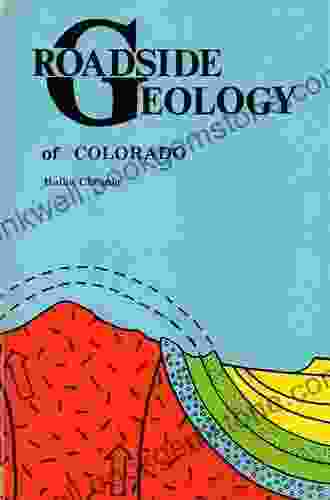
 Floyd Richardson
Floyd RichardsonUnveiling the Roadside Geology of Colorado: A Halka...
Colorado, a state renowned for its...
4.3 out of 5
| Language | : | English |
| File size | : | 413 KB |
| Text-to-Speech | : | Enabled |
| Screen Reader | : | Supported |
| Enhanced typesetting | : | Enabled |
| Word Wise | : | Enabled |
| Print length | : | 136 pages |


